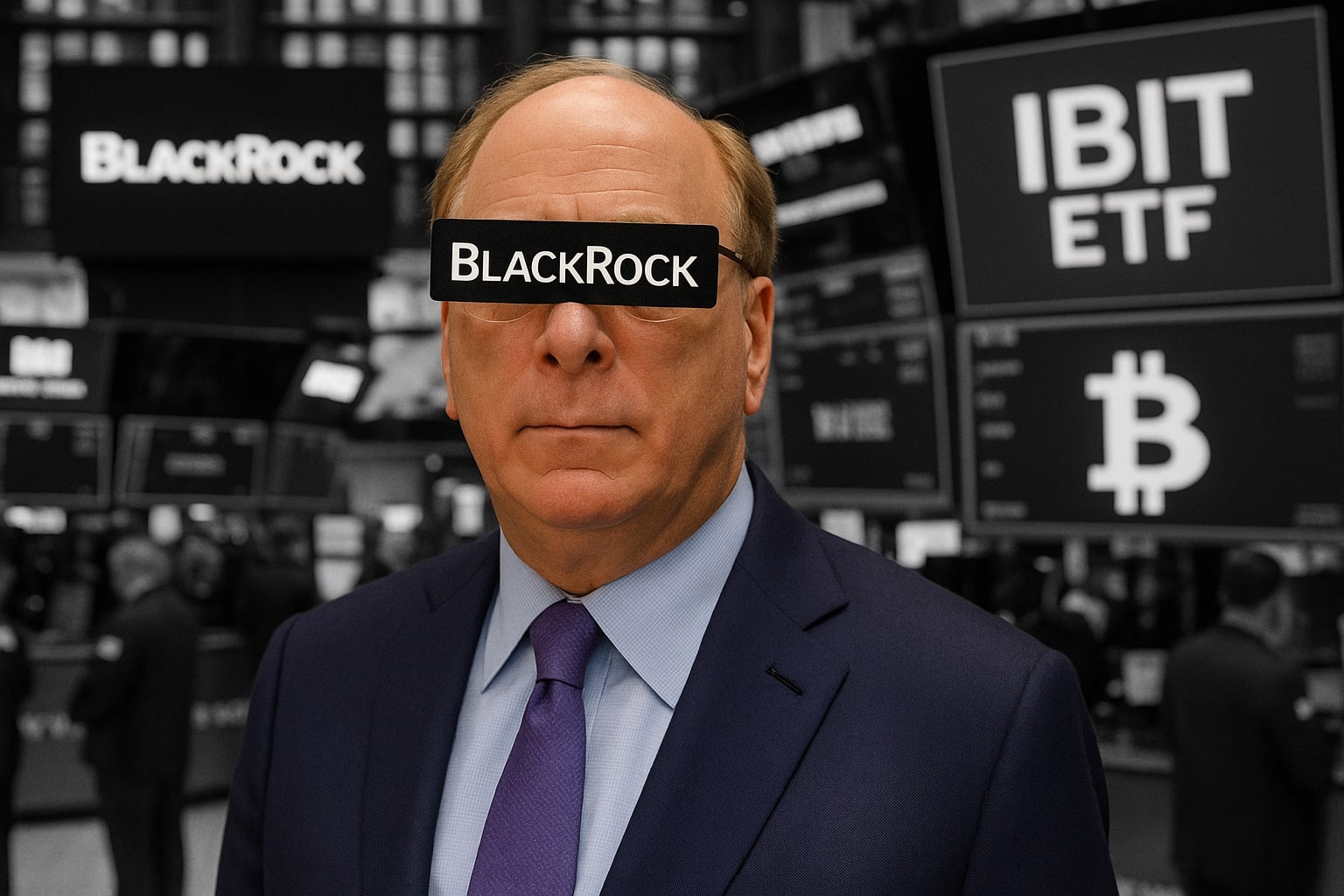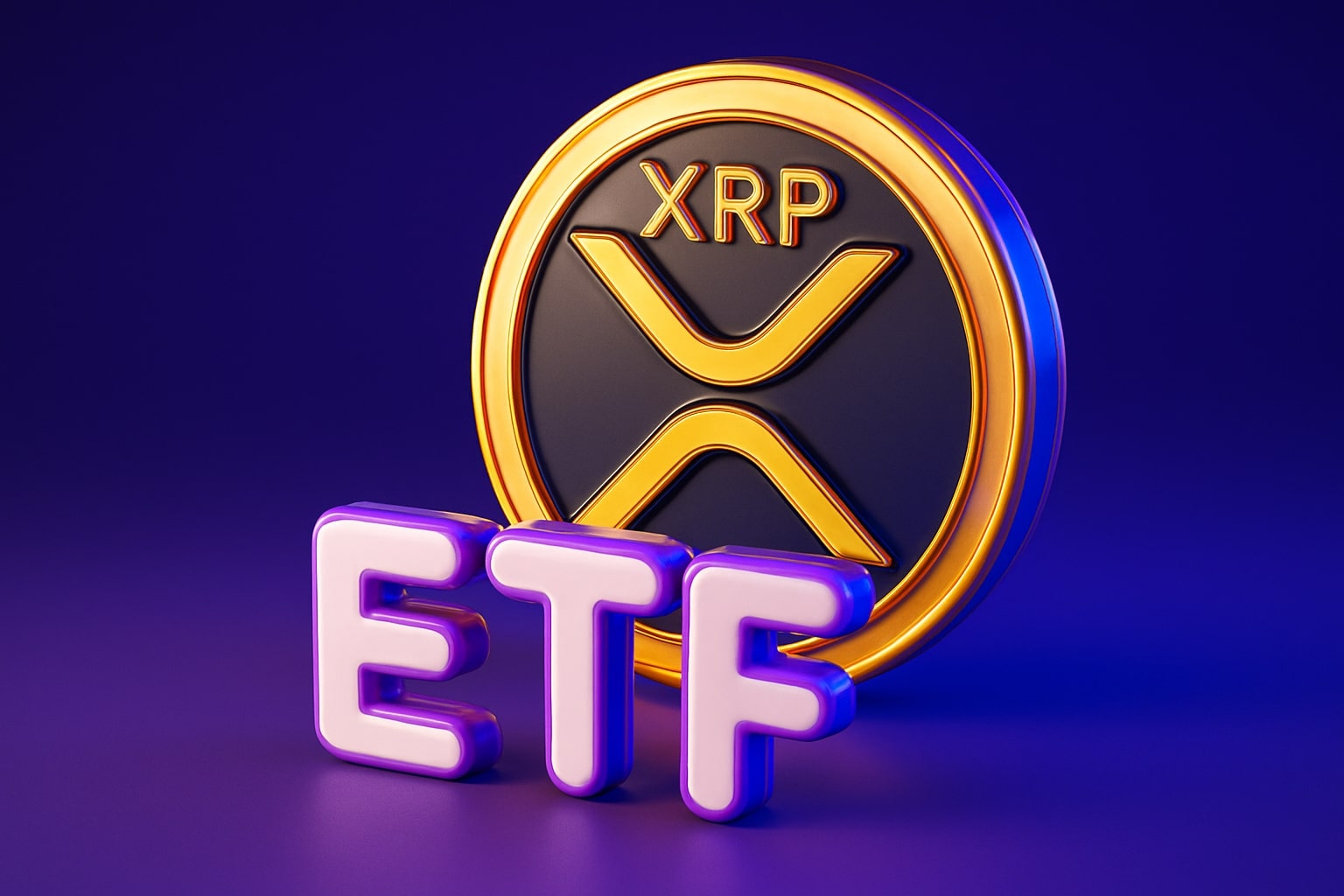
IBIT ETF NASDAQ:IBIT Trades Near $57 as Bitcoin (BTC-USD) Tests $77,000 — Capitulation Selling Signals Entry Point
BlackRock’s iShares Bitcoin Trust (NASDAQ:IBIT) faces $3.79B in outflows, down 15% in a month, but rising volatility and institutional re-entry suggest a rebound from the $55–$57 zone | That's TradingNEWS
NASDAQ:IBIT Extends Selloff Toward $55 as Bitcoin’s $77,000 Target Draws Institutional Buyers Back Into BlackRock’s ETF
BlackRock’s iShares Bitcoin Trust (NASDAQ:IBIT) has entered a technically critical phase as prices consolidate near $57.26, down more than 15% in the past month, mirroring Bitcoin’s slide from over $100,000 to nearly $82,000. Despite record ETF redemptions of $3.79 billion in November and widespread deleveraging across the digital asset sector, the risk/reward profile of IBIT is improving as the market nears what appears to be a capitulation bottom. Institutional positioning, volatility indicators, and technical structures all point to a high-probability accumulation zone in the $55–$57 range before a potential rebound toward $63–$68 in the coming weeks.
Institutional Capital Rebalancing in NASDAQ:IBIT Shows Deep Value Signals
The iShares Bitcoin Trust ETF, launched in January 2024, rapidly became one of BlackRock’s most profitable ETFs, managing over $80.28 billion in assets with an annualized revenue stream exceeding $244 million. Its 0.25% management fee undercuts competitors like Grayscale’s GBTC (1.5%), aligning it with Fidelity’s FBTC, while maintaining a far higher liquidity base. Since inception, a $10,000 investment in IBIT would have grown to $21,294, a total return of 112.9%, illustrating how deeply intertwined institutional portfolios have become with Bitcoin exposure. Over 1,387 institutional investors currently hold positions in IBIT, contributing $10.16 billion in inflows versus $1.36 billion in outflows. Among the largest holders are Millennium Management ($1.58B), Goldman Sachs ($1.44B), Brevan Howard ($1.39B), and Tudor Investment ($426.9M), each capitalizing on Bitcoin’s volatility while maintaining allocations through the correction.
Volatility Surge Signals Capitulation Phase for Bitcoin and IBIT
Implied volatility on IBIT options has surged back toward 60%, approaching the highs seen during last April’s drawdown. Historically, when volatility spikes above this threshold, Bitcoin and correlated ETFs tend to form medium-term bottoms. Cboe Global Markets data shows IBIT’s 1-month skew reaching the 97th percentile, confirming heavy demand for protective puts—a condition typical near the end of forced selling cycles. At the same time, the QQQ-SPX volatility spread widened to a one-year high of 7.3%, reflecting tech-sector stress and the deepening correlation between AI equities and digital assets. Analysts note that when implied volatility in Bitcoin ETFs climbs as equity risk spikes, the following rebound phase often delivers sharp double-digit recoveries.
Technical Structure Indicates $55–$57 as Final Support Zone
The technical setup for IBIT has deteriorated through sequential death crosses, with its 20-, 50-, 100-, and 200-day EMAs now bear-stacked—a structure that reflects persistent trend pressure. The ETF found short-term support at $57, bouncing modestly before being rejected near $60. A sustained break below $57 could push the fund toward $55, its next major structural support. On the upside, bulls will need a decisive move above $63 to confirm reversal momentum and re-establish a golden cross configuration. In parallel, Bitcoin (BTC-USD) has already hit its measured target at $77,000, derived from a broadening-top formation that spanned $104,000–$126,000 in range height. With the breakdown point at $99,000, this $22,000 difference projects the current low, signaling that the selloff has largely completed its technical cycle.
Bitcoin Correlation Confirms Capitulation Washout Near $77,000
Bitcoin’s 35% drawdown from its 52-week high aligns with Ether’s 44% and Solana’s 52% corrections. These figures mirror historical capitulation metrics seen in 2018 and 2022, when Bitcoin’s multi-month troughs preceded massive cyclical rallies. Year-to-date, Bitcoin is now down 10.3%, reversing early-year gains of more than 30%. November’s 25% monthly loss makes it the third-worst November since 2010, surpassed only by the 2018 and 2022 selloffs. Historically, when November ends negative, December follows with another 3%–7% decline before trend reversal—suggesting a potential bottom in early Q1 2026. IBIT, which is now trading at $57.26, reflects these same dynamics and historically lags Bitcoin price recoveries by 24 to 48 hours once reversal volume returns.
Fundamentals Remain Intact Despite ETF Redemptions
The recent outflow wave totaling $903 million in one day and $3.79 billion in November from Bitcoin ETFs was primarily driven by arbitrage unwind trades, not long-term selling. Hedge funds had constructed long ETF and short futures positions, profiting from the basis spread between spot and futures prices. As the spread collapsed under tighter dollar liquidity, these positions were closed, mechanically generating ETF outflows. Despite this, total ETF inflows since launch still exceed $57.4 billion, with IBIT alone holding $2.47 billion of redemptions in November but maintaining its leadership in the Bitcoin ETF space. Even with these withdrawals, 6.5% of Bitcoin’s market cap remains held through U.S.-regulated ETF vehicles—a level unmatched in any previous crypto cycle.
Institutional Sentiment Rotates but Does Not Exit the Market
While sentiment is weak, it is not absent. Institutional behavior shows rotation, not capitulation. Large multi-strategy funds are reallocating into stablecoins and short-duration debt, preparing for redeployment once liquidity conditions stabilize. Fundstrat’s Tom Lee noted that the $20 billion October liquidation across leveraged accounts caused deep collateral damage among liquidity providers, extending the risk-aversion cycle by several weeks. Once balance-sheet capacity rebuilds, inflows are expected to resume—likely before Q1 earnings season. Meanwhile, on-chain data from Nansen confirms accumulation in profitable wallets at the $80,000–$83,000 BTC range, suggesting that smart money is absorbing supply from weak hands.
Volatility and Cross-Asset Correlations Reinforce Opportunity Zone
Cross-asset volatility analysis from Cboe Global Markets shows implied skew steepening across both IBIT and Bitcoin options, with put premiums at record highs. The VIX index has risen to 19.8, while gold volatility (GLD) is near 22.8, reflecting synchronized risk hedging. Historically, when both gold and Bitcoin volatilities surge together, multi-asset funds reduce hedges in the following weeks—often preceding crypto market rebounds. The rising correlation between IBIT and NVDA over the last two quarters, as AI-related risk sentiment bleeds into crypto, is another indicator that a synchronized risk reset is unfolding across high-beta assets.
Read More
-
AMD Stock Price Forecast - AMD Powers Toward $1 Trillion Valuation as Data Center Drive Record $9.2B Quarter
21.11.2025 · TradingNEWS ArchiveStocks
-
XRP ETFs Crash as Whale Sell-Offs Slam XRP-USD Below $2 — XRPI and XRPR Face $411M in ETF Flows and Heavy Volatility
21.11.2025 · TradingNEWS ArchiveCrypto
-
Natural Gas Price (NG=F) Climbs to $4.62 as Winter Demand and Record LNG Exports Fuel Bullish Momentum
21.11.2025 · TradingNEWS ArchiveCommodities
-
Stock Market Today - Dow Climbs to 46,300 as NVDA, LLY, GAP, WMT Drive Market Rally
21.11.2025 · TradingNEWS ArchiveMarkets
-
USD/JPY Price Forecast - Dollar to Yen Steadies Above 156 After Intervention Threats
21.11.2025 · TradingNEWS ArchiveForex
Regulatory and Macro Landscape Adds Short-Term Headwinds
The U.S. employment report in mid-November reduced the probability of a December rate cut from 90% to 40%, reinforcing dollar strength and tightening liquidity. Meanwhile, the GAIN AI Act and proposals to expand CFTC jurisdiction over digital assets introduce additional short-term uncertainty. Yet these measures, combined with broader G7 and G20 coordination, are also laying the groundwork for institutional legitimization of crypto ETFs, strengthening the long-term foundation for IBIT and its peers.
Strategic Rating and Outlook for NASDAQ:IBIT
At $57.26, IBIT trades near its structural bottom and technical support, with downside risk limited to the $55–$56 band. The ETF’s implied volatility, institutional accumulation profile, and proximity to Bitcoin’s $77,000–$78,000 technical floor indicate that capitulation has likely occurred. With volatility in the 60% zone and extreme bearish sentiment, IBIT now offers an asymmetric entry opportunity for long-term investors. Short-term traders may continue to see resistance at $63–$68, while medium-term holders can expect potential recovery toward $70–$75 if Bitcoin reclaims the $90,000 mark. Based on all current metrics—capital rotation, institutional support, implied vol positioning, and price structure—IBIT is rated a Buy on weakness. The ETF remains the most credible vehicle for institutional Bitcoin exposure, backed by BlackRock’s custodial and liquidity infrastructure, and is well-positioned to outperform once macro tightening subsides and risk appetite returns to the crypto complex.

















